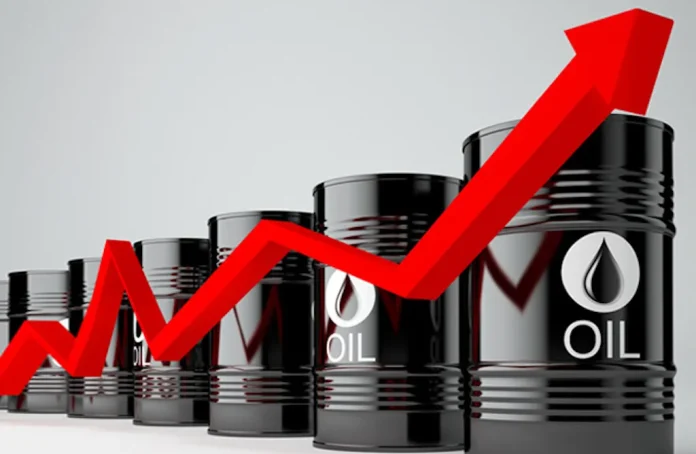Crude oil prices, trading at a one-month high, experienced a slight decline amidst growing concerns regarding global supply constraints, following the imposition of US tariffs on Venezuelan oil purchasers and restrictions on Iranian crude trade.
The international benchmark, Brent crude, decreased by approximately 0.5%, trading at $72.93 per barrel, down from $73.31 at the previous session’s close. The US benchmark, West Texas Intermediate (WTI), fell by roughly 0.5%, settling at $69.41 per barrel, compared to its prior session close of $69.76.
Oil prices declined due to apprehensions that US President Donald Trump’s economic and trade policies could accelerate inflation within the country and negatively influence the US Federal Reserve’s (Fed) decision to reduce interest rates.
Experts predict that the Fed’s postponement of interest rate cuts could diminish oil demand and drive prices downward. Meanwhile, prices approached one-month highs due to concerns regarding tightening supply.
Markets reacted to the impending April 2nd commencement of Trump’s proposed 25% tariff on Venezuelan oil and gas imports. Venezuela’s economy is heavily reliant on oil exports, with China as its primary buyer. The US sanctions on Iran also bolster expectations of a constrained global oil supply.
Last week, the US Treasury Department imposed sanctions on 19 entities and vessels connected to Iran’s oil exports, while the US State Department sanctioned a Chinese oil terminal for purchasing and storing Iranian crude from a sanctioned vessel.
Trump also announced a 25% tariff on all imported automobiles and spare parts. The White House’s Fact Sheet stated that the 25% tariff will be applied to imported passenger vehicles (sedans, SUVs, crossovers, minivans, cargo vans), light trucks, and essential automobile components (engines, transmissions, powertrain parts, and electrical components), and also indicated that additional parts could be subject to tariffs if deemed necessary.
Trump further threatened the EU and China with ‘large scale’ tariffs if they collaborate to inflict economic harm on the US.
‘If the European Union cooperates with Canada to cause economic harm to the USA, substantial tariffs, far exceeding current plans, will be imposed on both to protect the best ally that each of those two countries has ever had!’ he stated on the Truth Social platform.
The Organization of the Petroleum Exporting Countries (OPEC) and its allies, known as OPEC+, released a revised schedule for seven member countries to implement further production cuts to compensate for previous overproductions.
This initiative is anticipated to mitigate the impact of the group’s planned monthly production increases, which are scheduled to commence in April. ‘Increased supplies, particularly from sources outside the OPEC+ alliance, would likely restrain price increases,’ noted Daniel Hynes, a senior commodity strategist at the Australia and New Zealand Banking Group, in a report.
Meanwhile, the second round of US-Russia discussions regarding the Ukraine conflict may occur in the Saudi capital, Riyadh, in mid-April, according to Russia’s state-run TASS news agency.
Technical consultations will continue, although the next meeting is still being organized, it reported. The initial round took place on March 24th in Riyadh, where the parties discussed the revival of the Black Sea grain deal.














